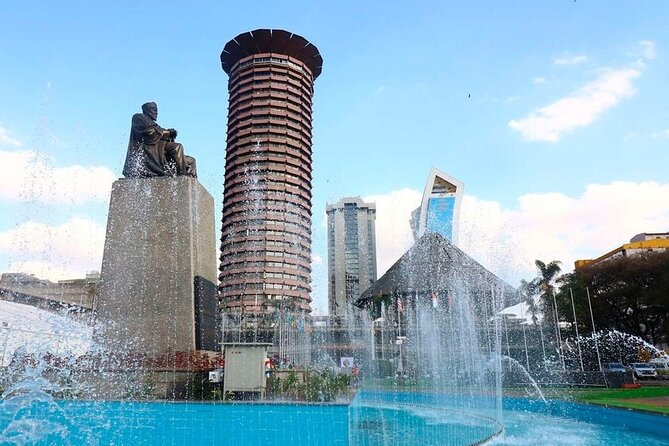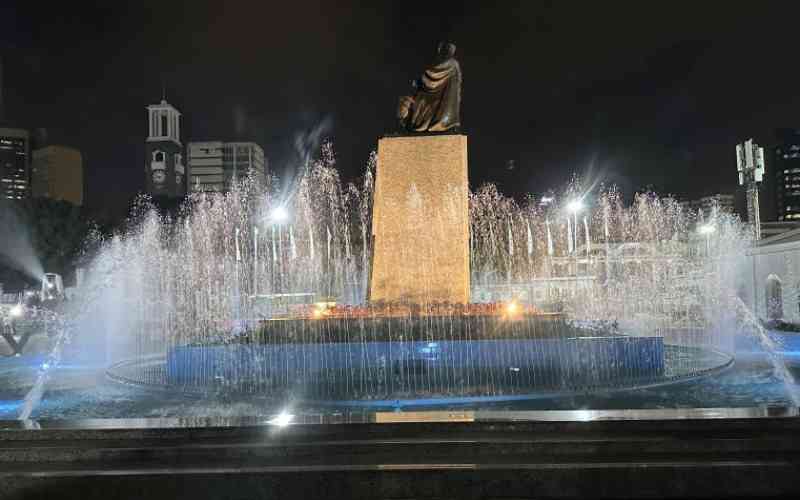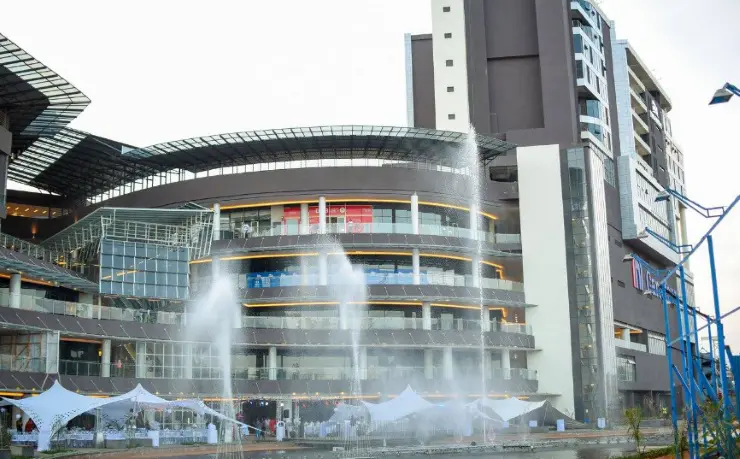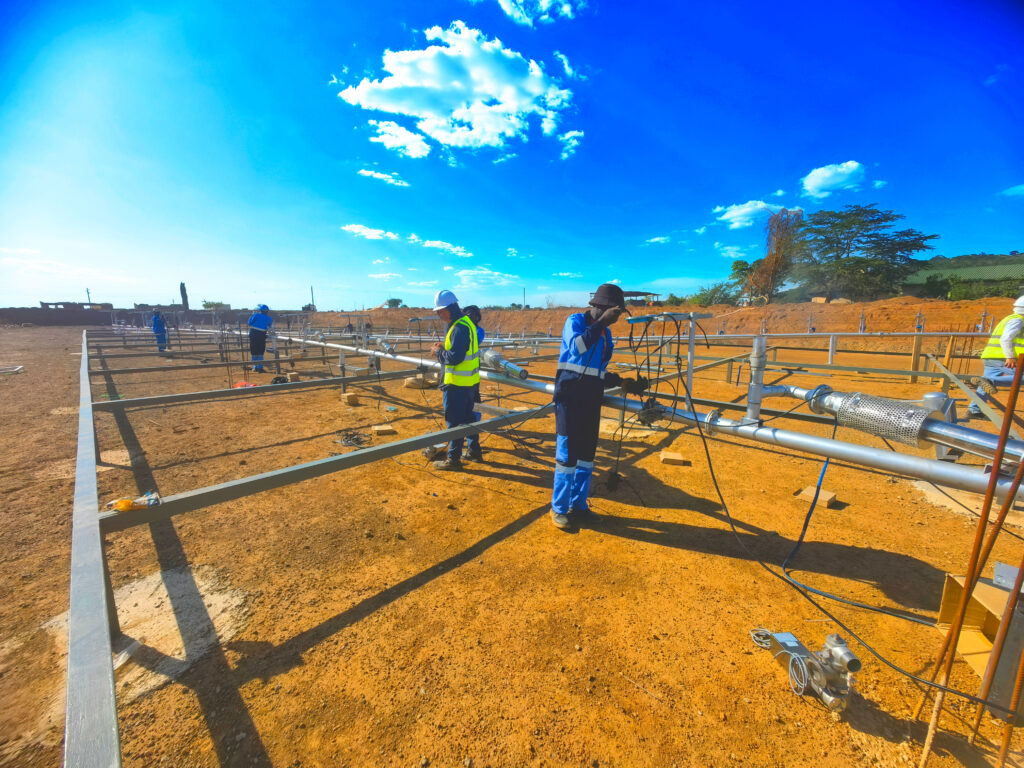News
The KICC Dancing Fountain in Kenya, Africa
- 2025-07-15
The Kenyatta International Convention Centre (KICC) in Nairobi stands as a testament to Kenya’s post-independence aspirations, blending architectural innovation with cultural significance. Recently, the introduction of an AI-powered dancing fountain has further enhanced its status as a premier destination for business and tourism.
1. A Brief History of KICC
Commissioned in 1967 by President Jomo Kenyatta, the KICC was designed by Norwegian architect Karl Henrik Nøstvik in collaboration with Kenyan architect David Mutiso. Construction was completed in 1973, and the centre was officially opened on September 11 of that year. Initially intended as a party headquarters, the building’s purpose evolved to serve as a national conference facility, especially after Nairobi was selected to host the World Bank’s annual meeting in 1973. The KICC’s design incorporates traditional African architectural elements, such as terracotta facades and conical forms reminiscent of indigenous huts, symbolizing a fusion of modernity and heritage.

2. The KICC Dancing Fountain
Timeline of the Project
Conceptualization and Design: The idea for the dancing fountain was inspired by global landmarks like the Dubai Fountain, aiming to create a similar attraction in Nairobi.
Installation: The project, with an investment of Ksh100 million, involved the integration of advanced robotics and artificial intelligence to synchronize water movements with music and lighting.
Launch: The fountain was officially unveiled in early 2024, marking a significant milestone in KICC’s efforts to enhance its appeal.
Key Features
Technological Integration: The fountain utilizes classic fountain equipment and advanced digital-control technology to choreograph water jets in harmony with various music genres, including Kenyan cultural tunes, classical symphonies, and modern pop.
Water Features: Super high fountain, dynamic chasing and running fountain, digital swing and rotary fountain, variation fountain, mist fountain etc., are being designed and applied in the KICC fountain show.
Sustainability: Designed with environmental considerations, the fountain operates on solar energy and employs a closed-loop water system that recycles water for up to six months, minimizing waste.
Cultural Representation: The performances are tailored to reflect Kenyan heritage, offering a unique blend of traditional and contemporary elements that resonate with both local and international audiences.
Opening Times
The dancing fountain shows are scheduled during evenings, particularly on weekends, to attract both locals and tourists. Specific timings may vary, so it’s advisable to check the KICC’s official website or contact their information desk for the latest schedule.
Significance to KICC
The introduction of the dancing fountain serves multiple purposes:
Enhancing Visitor Experience: It provides an engaging attraction for visitors, complementing the centre’s conference and exhibition facilities.
Boosting MICE Tourism: By offering unique attractions, KICC aims to solidify Nairobi’s position as a leading destination for Meetings, Incentives, Conferences, and Exhibitions.
Cultural Showcase: The fountain acts as a medium to display Kenya’s rich cultural tapestry to a global audience.
3. Opportunities and Challenges of Constructing Dancing Fountains in Africa
Opportunities
Tourism Development: Such attractions can significantly boost local and international tourism, leading to economic growth.
Urban Revitalization: Integrating modern attractions can rejuvenate public spaces, making cities more livable and vibrant.
Cultural Promotion: Fountains can serve as platforms to showcase local art, music, and traditions, fostering cultural pride.

Challenges
High Initial Costs: The construction and installation of technologically advanced fountains require substantial investment, which may be a barrier for some regions.
Maintenance and Sustainability: Ensuring the fountain operates efficiently over time demands regular maintenance and a consistent power supply, which can be challenging in areas with infrastructural limitations.
Environmental Concerns: Water usage and energy consumption are critical considerations, necessitating sustainable designs to mitigate environmental impact.
The KICC’s dancing fountain exemplifies how African institutions can blend tradition with innovation, creating attractions that resonate both locally and globally. While challenges exist, the potential benefits in tourism, cultural promotion, and urban development make such projects worthwhile endeavors.

4.Other Famous Dancing Fountains in Africa
While dancing fountains are not as widespread in Africa as in some other regions, there are still several notable examples across the continent. Here are some known or emerging dancing fountains in Africa:
1.Forest Walk Fountain – Nairobi, Kenya
Located along the Forest Road footbridge in Nairobi.
Features synchronized water jets and colorful LED lights.
Part of an urban beautification and pedestrian safety initiative.
2.Bellagio-style Fountain at Almaz by Sidra – Addis Ababa, Ethiopia
A modern, choreographed fountain system.
Located in a luxury residential and commercial development.
Offers light and music shows similar to famous global dancing fountains.
3.Two Rivers Mall Fountain – Nairobi, Kenya
Claimed to be the largest dancing fountain in Sub-Saharan Africa.
Located at Two Rivers Mall.
Includes water, light, and music synchronization.
Popular tourist and local attraction.
4.Dancing Fountain at the Mall of Africa – Johannesburg, South Africa
A large shopping center with an advanced water fountain feature.
Features choreographed water displays with lights and music.
5.Mogadishu Peace Garden Fountain – Mogadishu, Somalia
A symbolic installation in a rehabilitated public park.
Includes modest water and light features, sometimes referred to as a dancing fountain in local media.

6.Zim Cyber City Dancing Fountain – Zimbabwe
A 80-meter long pool dancing fountain for Zim Cyber City in Zimbabwe.
Designed and installed by China Himalaya Music Fountain Company, used the latest fountain technology such as super high fountain, digital swing fountain, precise-control chasing fountain, artificial fog effect, DMX512-control LED lights, stainless steel submersible fountain pumps, world-famous brands for electrical components, advanced control software specialized for fountain show.
These installations are often part of broader urban regeneration projects or commercial developments. The popularity of such fountains is gradually increasing in African cities as public spaces and infrastructure improve.

The KICC Dancing Fountain stands as a vibrant symbol of Nairobi’s modernization and cultural pride. Blending art, technology, and public engagement, it offers both locals and visitors a unique sensory experience in the heart of Kenya’s capital. More than just an aesthetic marvel, the fountain reflects Kenya’s commitment to enhancing urban spaces and celebrating its dynamic identity. As night falls and the water dances to the rhythm of lights and music, the KICC fountain not only illuminates the skyline but also the aspirations of a city embracing the future.


